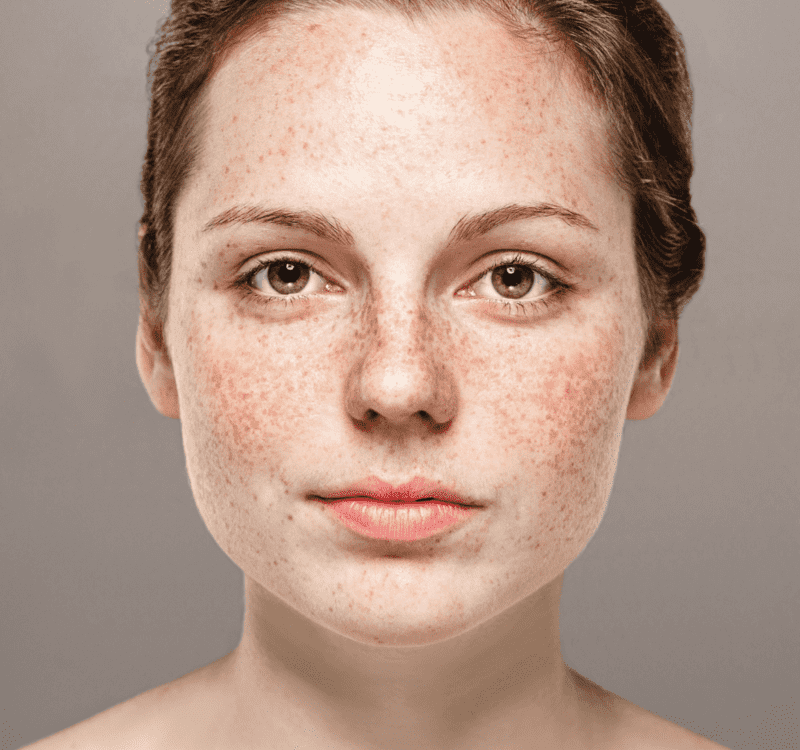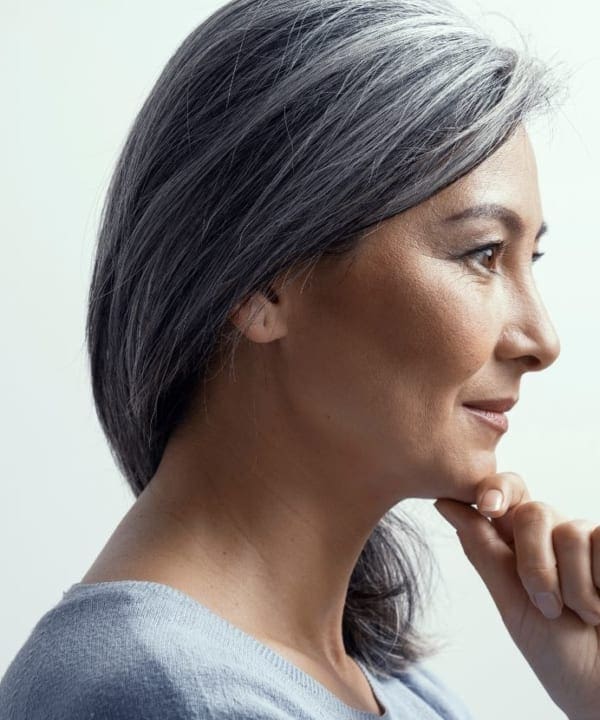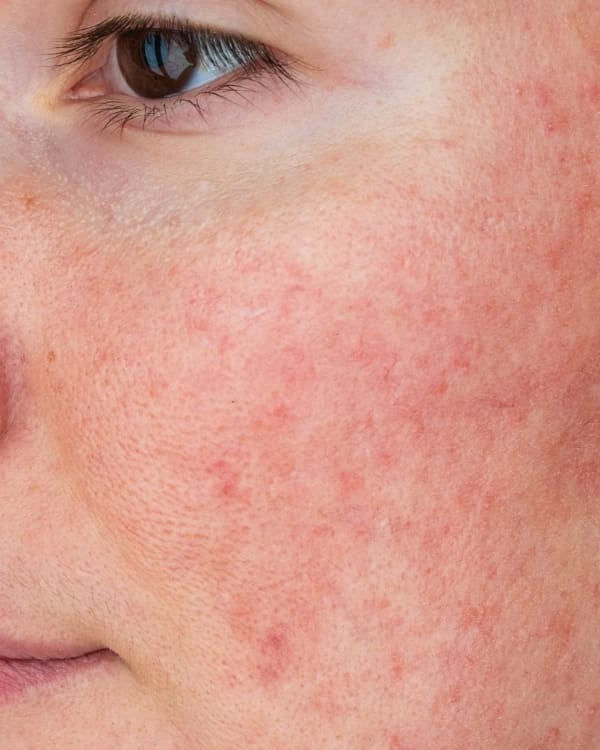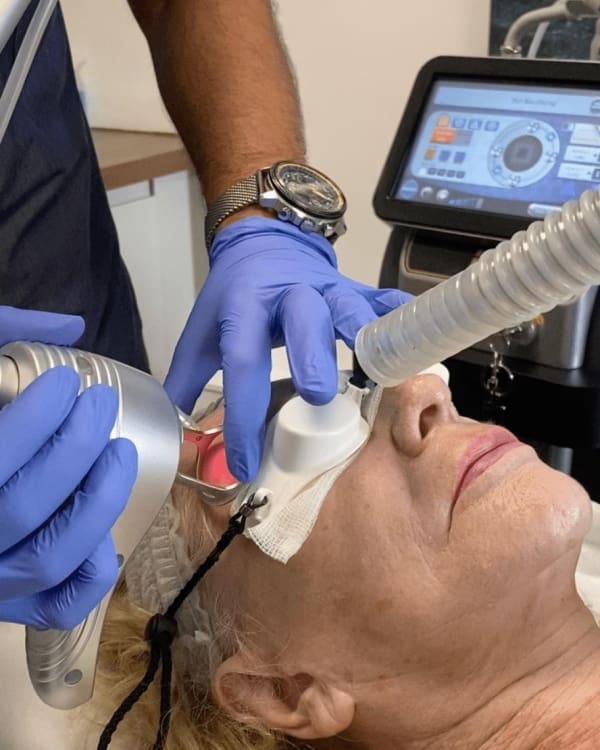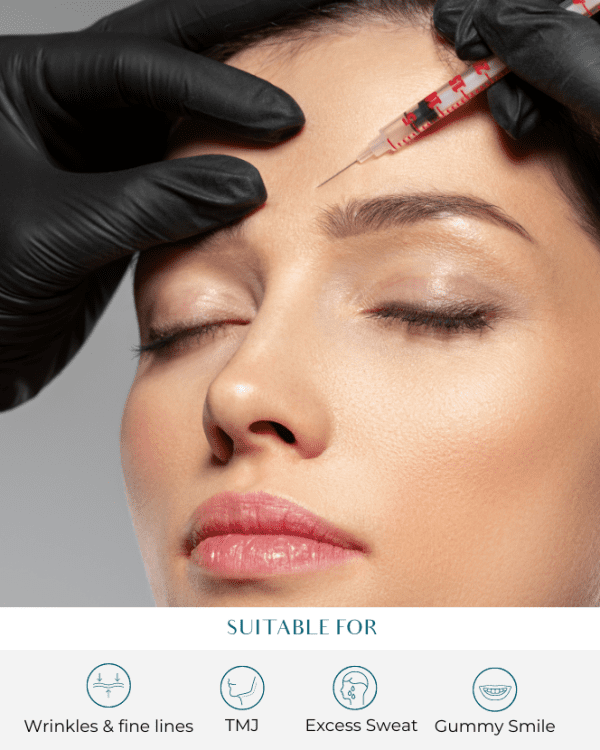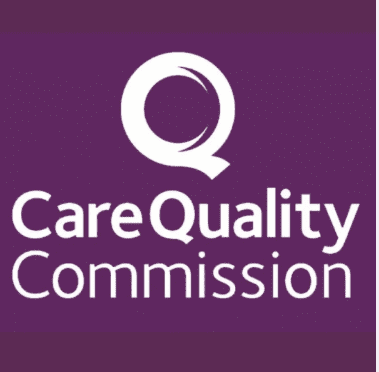Sun Spots: What can you do?
What Are Sun Spots?
Sun spots, also known assolar lentiginesorage spots, are flat, brown marks on the skin caused by prolonged sun exposure and cumulative sun damage. While not a medical diagnosis, this lay term describes pigmentation changes resulting from the harmful effects of ultraviolet (UV) radiation on the skin.
What Causes Sun Spots?
Sun spots develop due to UV radiation from the sun, which causes damage to the cellular DNA in skin cells. This damage accumulates over time, leading to various skin changes, including pigmentation issues and even skin cancer. The sun’s rays are a significant factor in developing these spots, particularly in sun-exposed areas like the face, hands, and shoulders.
How Do They Differ from Freckles?
Freckles are often mistaken for sun spots but differ in several ways. Freckles are small, flat, brown marks that appear on the skin, usually in individuals with fair skin who lack sufficient natural pigment for protection. They are also caused by UV exposure but tend to appear earlier in life and may become more prominent with intense sun exposure. Unlike freckles, sun spots typically develop later in life due to prolonged sun exposure.
What Can You Do About Sun Spots?
The easiest way to prevent sun spots is to wear sun protection and limit your sun exposure. If it’s a particularly sunny day, avoid prolonged sun exposure and wear SPF. We also recommend wearing a wide-brimmed hat.
SPF can provide sun protection and prevent melanin production from sun damage. UV protection is also encouraged to prevent sun cancer, aside from cosmetic reasons.
How Can You Prevent Sun Spots?
Preventing sun spots involves adopting a comprehensive sun protection strategy:
- Use Broad-Spectrum Sunscreen: Apply a sunscreen with a high Sun Protection Factor (SPF) that contains minerals like Zinc Oxide or Titanium Dioxide. Ensure it offers both UVA and UVB protection.
- Wear Protective Clothing: Opt for tightly woven clothing and wide-brimmed hats to shield your skin from direct sunlight.
- Seek Shade: Avoid prolonged sun exposure, especially between 11 AM and 3 PM when the sun’s rays are most intense.
- Avoid Tanning Beds: These can contribute to skin damage similar to natural sunlight.
What Are the Best Home Treatments for Sun Spots?
Several home treatments can help fade age spots and improve skin tone:
- Skin Brightening Products: Ingredients like liquorice extract, alpha-arbutin, and kojic acid can be effective if formulated correctly with proper molecular delivery technology.
- Natural Remedies: Some people use lemon juice for its mild bleaching effect, although results can vary.
What Are the Best In-Clinic Treatments for Sun Spots?
For more persistent or deeply pigmented sun spots, professional treatments may be necessary:
- Intense Pulsed Light (IPL) Therapy: Devices like Lumecca by InMode are highly effective for targeting pigmentation with minimal downtime.
- Laser Treatments: Laser resurfacing can remove layers of damaged skin to reveal new skin beneath.
- Chemical Peels: These involve applying a chemical solution to exfoliate and rejuvenate the skin. A chemical peel can refresh and glow skin.
- Liquid Nitrogen: Cryotherapy can be used to freeze and remove superficial age spots.
Conclusion
Sun spots are a common result of cumulative sun damage but can be managed with preventive measures and effective treatments. By incorporating broad-spectrum sunscreen into your daily skincare routine, wearing protective clothing, and seeking shade during peak sunlight hours, you can reduce your risk of developing sun spots. For existing spots, consult a dermatologist for personalized treatment options that may include IPL therapy or chemical peels to achieve a more even skin tone.



























